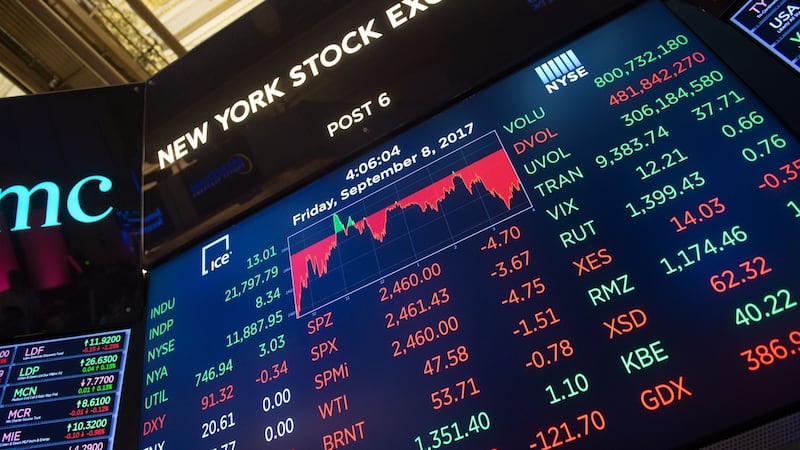Warren Buffett doesn't like it. Fellow value investor Howard Marks thinks it's a speculative bubble, as does hedge fund icon Ray Dalio. Allianz's Mohamed El-Erian says it's wildly overvalued. JPMorgan chief executive Jamie Dimon says it's "worse than tulip bulbs". Yes, we're talking about bitcoin which continues to swing about in crazed fashion. Below $2,000 in mid-July, it touched $5,000 in early September, then crashed below the $3,000 level before quickly moving back above $4,000. Dimon's recent warning – he said JPMorgan would sack anyone who traded bitcoin, saying it was best left to drug dealers and murderers – touched a few nerves among enthusiasts. In a Guardian piece, financial writer Dominic Frisby noted Dimon also denounced bitcoin in late 2015, since when bitcoin has appreciated tenfold. "Who's the stupid one?", he asked. Sceptics may be "jealous that other people are getting rich when they're not". By this reasoning, only stupid and jealous people didn't buy Pets.com and Baltimore Technologies and all the other hopeless dotcoms that shot upwards in the late 1990s. Are Dimon and Dalio and Marks and all the other sceptics really being stupid when they warn bitcoin is too volatile to be a currency or an effective store of wealth? Dimon admits bitcoin may go to $20,000 or beyond, but that doesn't mean he's wrong. If bitcoin isn't a bubble, nothing is.
Markets ignore Trump’s ‘barking’ over North Korea
It's not often financial markets agree with North Korea, but the latter's dismissal of Donald Trump's latest wild threats – "If he was thinking he could scare us with the sound of a dog barking, that's really a dog dream", said foreign minister Ri Yong-ho – echoed investors' nonchalance. Trump's UN address, where he threatened to "totally destroy" North Korea and the regime of "rocket man", garnered headlines around the world, but markets yawned, with the S&P 500 and Nasdaq flat on the day. Markets went on to average an intra-day range of just 0.24 per cent over a five-day period – the most peaceful run in history, according to Pension Partners' Charlie Bilello. The market calm continues to break all records, noted LPL Research. The S&P 500's average daily range in 2017 has been just 0.54 per cent, well below the previous record of 0.7 per cent in 1993. There have been 25 days where the index's daily range didn't exceed 0.3 per cent, compared with just 21 over the previous eight years combined. Talk of nuclear apocalypse is scary, but investors aren't bothered. To quote the Koreans again, the marching goes on even when dogs bark.

Another milestone for US bull market
The ongoing US bull market is now the second-strongest rally in history. Recent gains means the S&P 500 is up almost 270 per cent since March 2009, exceeding the 267 per cent gain registered during the 1949-56 bull market. The rally, now more than eight years old, had already been the second-longest in history, although only the most bullish of observers reckon it will ever catch up to history’s biggest bull market – the 1987-2000 rally, when stocks gained an astonishing 582 per cent. Still, while the rally may be old, there’s no indication sentiment is anywhere near the excessive levels seen near market peaks. Similarly, bear markets need a catalyst, typically a recession, and there’s no hint of that on the horizon. Momentum, too, augurs well for bulls, with stocks gaining in each of the last five months – in 23 out of 24 past examples, stocks were higher a year later, notes LPL Research, averaging gains of 13 per cent. In short, the rally is old and valuations are high, but there’s no end in sight just yet.
Buffett: Dow will hit 1 million
The long rally has seen the Dow Jones soar from 6,500 to more than 22,000. How high can it go? Above one million, according to Buffett. He's not kidding, although Buffett's timeframe is longer than most – he's thinking about where stock prices will be in 100 years' time. It sounds extreme, but he's probably right. The miracle of compound interest means average annual gains of just 3.9 per cent would propel the Dow above 1 million in 2117. However, Buffett's cheerleading for the US – "it's an amazing country we live in", he said last week, adding that anyone betting against it is "out of their mind" – ignores the fact it looks very expensive relative to all other developed markets. Furthermore, long periods of poor returns do happen. Outside the US, all but three countries have suffered 20-year periods where stocks failed to keep up with inflation. Things may be fine in 100 years' time, but John Maynard Keynes was right – in the long run, we are all dead. In the meantime, non-US markets look a better long-term bet.











